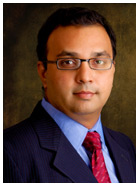
Here’s a sneak peek of five more companies who will demo at FinovateAsia next month in Singapore. These companies each gave us a glimpse of what they plan to demo.
If you missed our first sneak peek, check it out here. We’ll post the remaining companies in the next couple of weeks so stay tuned.
To see all 37 companies demo live at FinovateAsia, get your ticket here.
 ArthaYantra’s Arthos is an online personal finance platform that replaces the traditional human advisor and provides holistic advice instantly.
ArthaYantra’s Arthos is an online personal finance platform that replaces the traditional human advisor and provides holistic advice instantly.
Features:
- Online personal finance platform with instant, actionable advice
- Replaces the need for a traditional human advisor
- Create a financial plan, implement recommendations, and monitor performance
Why its great:
Instant and end-to-end financial planning without visiting a traditional human advisor
Nitin B Vyakaranam
Founder and CEO of ArthaYantra with 14 years of BFSI and IT sector experience across countries. Holds multiple patents and is an avid personal finance writer. Earned an MBA from Indian School of Business.
Sunil Lingareddy
Co-Founder and CFO of ArthaYantra. A serial entrepreneur and mentor with business interests in financial services, pharma, real estate, energy and infrastructure. Earned an MBA from Indian School of Business.
LinkedIn

Customer XPs is a leading real-time technology solution provider to banks worldwide. It will demonstrate paperless branch banking and intelligent queuing solution.
Features:
- Improved teller efficiency and productivity by intelligent queue processing
- Improved customer experience by reduction in wait time
- Reduced error rate
Why it’s great:
It’s solution creates efficient queuing and paperless banking in branches. Quick deployment of the solution can be on mobile devices, tablets and PCs.
Rivi VargheseRivi is the CEO and has around 15 years of experience in the IT product industry. Rivi has international experience across 20+ countries and is credited with delivering at least 12 new-to-the-world products.
LinkedIn
 Kofax enables customer acquisition directly from the mobile device and, recognizing the importance of consumer engagement, Kofax will demonstrate on-boarding for an impactful customer experience.
Kofax enables customer acquisition directly from the mobile device and, recognizing the importance of consumer engagement, Kofax will demonstrate on-boarding for an impactful customer experience.
Features:
- Meet and service the customer via the mobile channel
- Reduce operating costs and minimize drop-off rates
- Build competitive advantage while increasing growth and profitability
Why it’s great:
Kofax Customer Onboarding improves the agility and profitability of your bank’s customer on-boarding processes by engaging customers via mobile devices.

Drew Hyatt
Drew is a domain expert in mobile image capture. He works directly with top-tier FSI companies to develop mobile image capture solutions that integrate with and enhance their mobile strategies.

Dimitri Seneca Snowden
Dimitri is a visual strategist who leads solution innovation at Kofax. He has more than 13 years of experience in user interface design, user experience design and universal design.

Mobexo is reshaping the way we think about payment and financial services.
Features:
- Mobile-specific security technology
- Merchant portal, low-cost CRM system
- Payment processing without additional hardware
Why it’s great:
Mobexo connects smartphone users to the physical and digital commodities of their lifestyles, without security and privacy issues and the inconveniences of traditional payment instruments.

Sopheap Lao
Founder and CEO of Mobexo, Sopheap has over 16 years as a Senior Accounting and Finance Consultant where he founded Heuristis Business Consulting. Sopheap is also an Open Source Evangelist.
Jean-Marc Ly
Jean-Marc is a serial entrepreneur from Silicon Valley and founded several startups that have been incubated in AcceleratorHK and Science Park incu-app. He is a startup advocate and mentor.

Pixeliris’ CopSonic enables contactless sonic and ultrasonic communication between smart devices for mobile payment and passwordless authentication available on phones and smartphones.
Features:
- It turns any phone into a mobile payment device
- It is truly contactless and entirely secure thanks to One Time Password and strong authentication
- It replaces standard online passwords
Why it’s great:
With Copsonic, pay anywhere with any phone.

Brian Roeten (pictured)
Brian joined the team in 1999. Today, his experience and skills enable him to manage the company’s innovating international hightech projects.
Emmanuel Ruiz
Since he founded the company in 1995, Emmanuel Ruiz has initiated all innovations, from our first audio broadcasting systems to the recent sonic and ultrasonic contactless communication technology.
Stay tuned on the Finovate blog where we will publish parts 3 and 4 of our Sneak Peek series in the weeks leading up to November 14.















